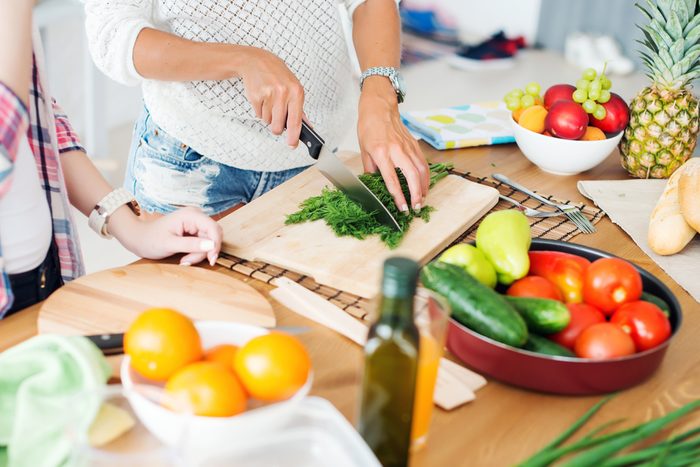
How To Eat Less Processed Foods
Moving away from pre-made and packaged foods and going back to basics at mealtime is good for your health (and your grocery budget, if it’s done right!).
Reducing your intake of heavily processed and packaged foods has lots of health benefits. This includes a reduced risk of Type 2 diabetes, heart disease and certain types of cancer, but for many people it sounds, well, daunting. It doesn’t have to be, says Wendy McCallum, a natural nutrition clinical practitioner, food coach and educator in Halifax, NS, and author of The Real Food Solution and No More Junk Food!
Her advice is to make changes slowly instead of all at once, and be patient as your palate adjusts. Remember: packaged foods and restaurant meals are typically high in salt, fat and sugar, which can make healthy homemade fare seem bland by comparison.
“When you eat real food, you’re eating food that is naturally lower in sugar and sodium, free of harmful artificial fats, high in fibre, nutrient dense and, generally speaking, lower in calories,” she says. “So, gram per gram, you tend to get more nutrition and fibre and fewer calories,” says McCallum. You really can’t go wrong with that.
Ready to give it a go? Pick up some (or all) of these healthy habits of people who don’t eat a lot of processed foods.
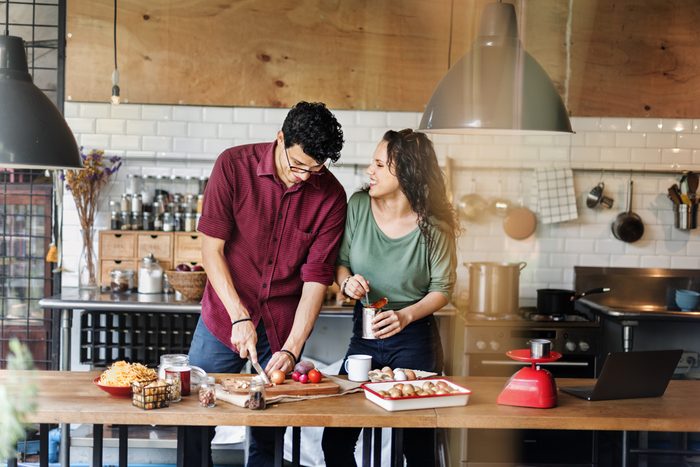
1) They Plan Ahead
Getting the hang of buying just the right amount of fresh foods can be tricky. Meal planning is the key. Before you head to the store, sit down and strategize breakfasts, lunches and dinners for the week, then make a list of exactly what you’ll need. McCallum suggests planning several meals around one leafy green and a few different vegetables (like kale, broccoli and red pepper, for example) to make sure you use them all up.
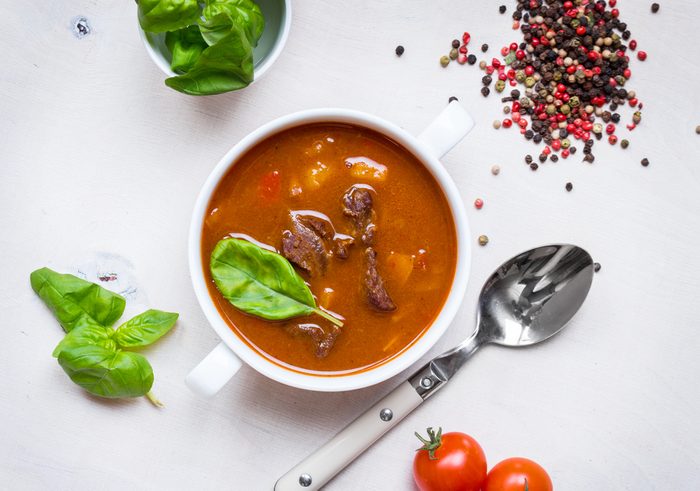
2) Slow Cookers Are Their BFF
Coming home from work to a homemade meal every night is possible – and no, you don’t have to hire a personal chef! Set aside an extra 15 minutes in the morning to get a big pot of something comforting (like soup or chili) going in your slow cooker. Knowing it’s waiting for you at home will prevent you from grabbing takeout or a pre-made grocery store meal at the end of a long day.

3) They Still Enjoy Eating Out
Eating out is still doable while sticking close to real foods – with a little planning. “Your best strategy is to see if you can find the menu online first,” explains McCallum. “Then you don’t have to ask the waiter, hem and haw and make a big deal out of it.”
She recommends ordering whole foods in their separate forms. For example, order a piece of grilled chicken or fish with vegetables or a side salad and some type of grain. You could also try a plant-based meal, like a big salad (dressing on the side) or a stir-fry. “It’s not about perfection when you go out either,” she says.

4) Salads Are Their Go-To Lunch
Salads are an easy go-to meal to make in the morning. For starters, try a spinach and kale salad topped with your favourite chopped veggie and a protein, like walnuts and a homemade dressing. “Making your own dressing is inexpensive and allows you complete control over what’s in it,” says McCallum.
She suggests making a small jar-size batch each week (a dressing without egg or mayo will typically keep in the fridge for five to seven days) or buying bottles of good-quality balsamic vinegar and olive oil to drizzle over your greens. For more zip, try an infused oil or a flavoured balsamic vinegar. Also helpful is an hourly reminder to move.
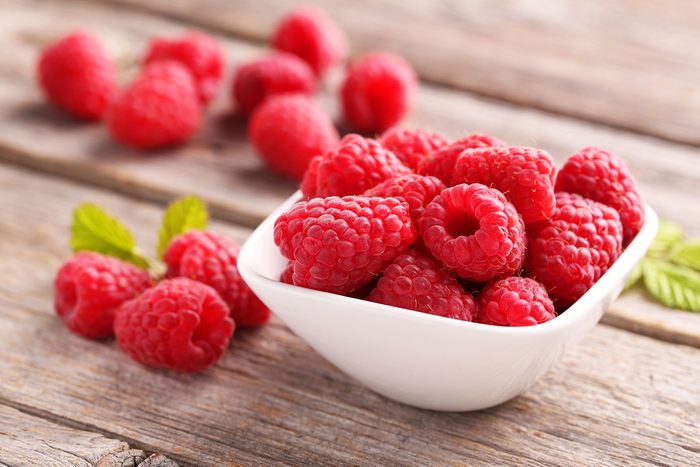
5) They Always Have Snacks On Hand
Take a close look at when you tend to crave high-sugar grab-and-go snacks, and plan for it. “For most people, it’s right around three o’clock in the afternoon,” says McCallum.
Packing a healthy, low-sugar real-food snack to replace that coffee-shop muffin will allow you to sail right through to dinner feeling energized and satisfied sans sugar crash. For example, swap that high-sugar blueberry muffin for a bag of raw nuts, seeds and dried fruits, including unsweetened cranberries. Additionally, fresh fruit is always a yummy option.
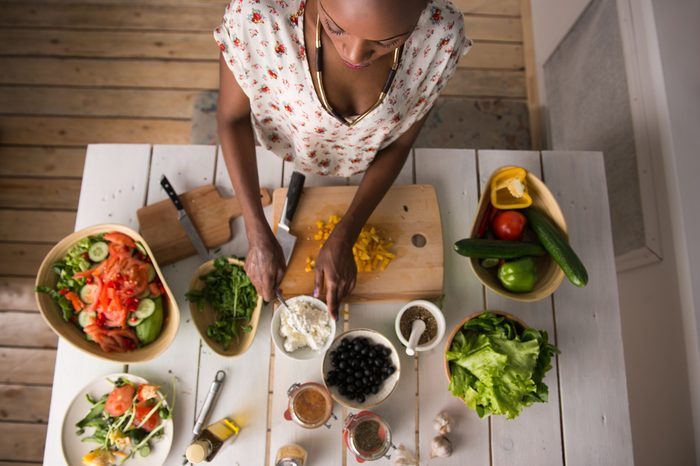
6) They Try Out New Recipes
One way to nudge your real-food ratio up is to make something that you normally buy. One of the first things McCallum tried was tortillas. Her family ate them often, but some of the ingredients in the store-bought version (including hydrogenated oil, a trans fat that can increase your risk of heart disease) didn’t make her feel good.
“Generally I didn’t like the fact that there were 15 or more ingredients in many of the brands I looked at,” she says. “I just couldn’t figure out why there were so many ingredients and was sure there was a simpler, cleaner, less expensive way to make them.”
Once she gave homemade tortillas a try, she was a convert. “They take very little time and you can freeze them,” she says.
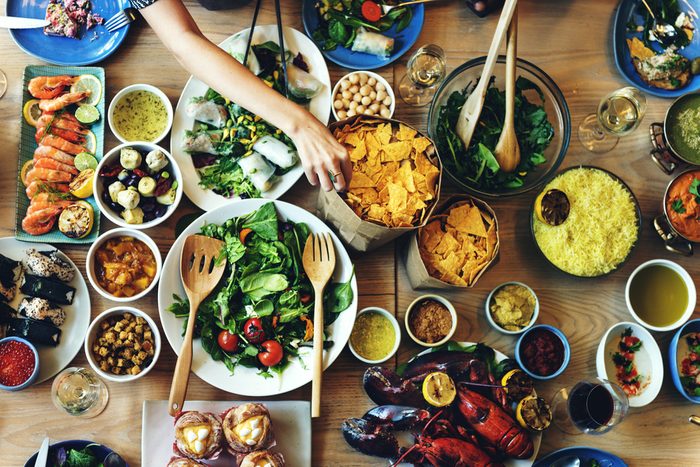
7) They Make Meals in Batches
Set yourself up for success by making some of the week’s meals and snacks ahead of time. Keep it fun: Put some tunes on, invite a friend and split the bounty! Roast a chicken and slice and freeze it into dinner-size batches, whip up a jar of hummus or cook a big pot of brown rice to freeze in half-cup portions.
Of course, having some of your core breakfast, lunch and dinner ingredients ready to go in the fridge and freezer will make mealtimes easier. Trust us, you’ll thank yourself later!
